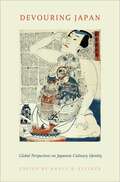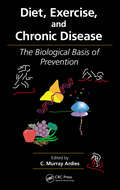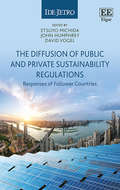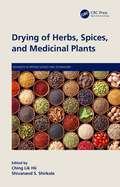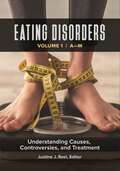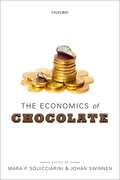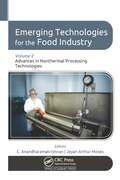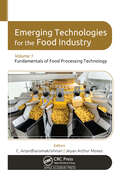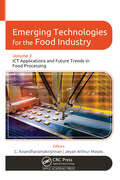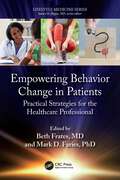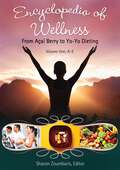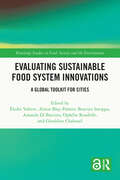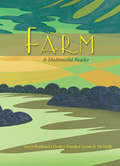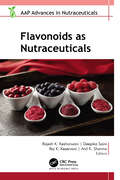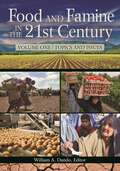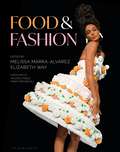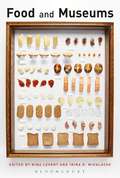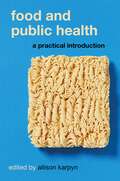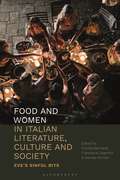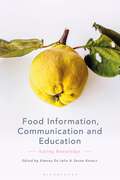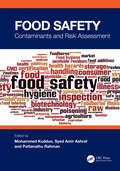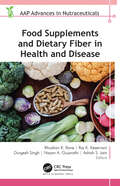- Table View
- List View
Cupcake (Large Print)
This is a picture of a cupcake. It is in the middle of the page. There is a locator dot shown, which will be at the top left of the page when the image is the correct way up. At the top of the picture a glace cherry is sitting on some pink sugar icing. Below this is the cake overflowing the top of the paper cup below.
Cupcake (UEB Contracted)
This is a picture of a cupcake. It is in the middle of the page. There is a locator dot shown, which will be at the top left of the page when the image is the correct way up. At the top of the picture a glace cherry is sitting on some pink sugar icing. Below this is the cake overflowing the top of the paper cup below.
Cupcake (UEB Uncontracted)
This is a picture of a cupcake. It is in the middle of the page. There is a locator dot shown, which will be at the top left of the page when the image is the correct way up. At the top of the picture a glace cherry is sitting on some pink sugar icing. Below this is the cake overflowing the top of the paper cup below.
Devouring Japan: Global Perspectives on Japanese Culinary Identity
In recent years Japan's cuisine, or washoku, has been eclipsing that of France as the world's most desirable food. UNESCO recognized washoku as an intangible cultural treasure in 2013 and Tokyo boasts more Michelin-starred restaurants than Paris and New York combined. International enthusiasm for Japanese food is not limited to haute cuisine; it also encompasses comfort foods like ramen, which has reached cult status in the U.S. and many world capitals. Together with anime, pop music, fashion, and cute goods, cuisine is part of the "Cool Japan" brand that promotes the country as a new kind of cultural superpower. This collection of essays offers original insights into many different aspects of Japanese culinary history and practice, from the evolution and characteristics of particular foodstuffs to their representation in literature and film, to the role of foods in individual, regional, and national identity. It features contributions by both noted Japan specialists and experts in food history. The authors collectively pose the question "what is washoku?" What culinary values are imposed or implied by this term? Which elements of Japanese cuisine are most visible in the global gourmet landscape and why? Essays from a variety of disciplinary perspectives interrogate how foodways have come to represent aspects of a "unique" Japanese identity and are infused with official and unofficial ideologies. They reveal how Japanese culinary values and choices, past and present, reflect beliefs about gender, class, and race; how they are represented in mass media; and how they are interpreted by state and non-state actors, at home and abroad. They examine the thoughts, actions, and motives of those who produce, consume, promote, and represent Japanese foods.
Diet, Exercise, and Chronic Disease: The Biological Basis of Prevention
Exercise and diet are key factors in the etiology and prevention of chronic disease. While most books on chronic disease have a decided clinical approach, Diet, Exercise, and Chronic Disease: The Biological Basis of Prevention brings together the latest cellular- and molecular-based research on the etiology of chronic diseases and the impact of var
The Diffusion of Public and Private Sustainability Regulations: The Responses of Follower Countries
This book focuses on the spread of public and private environmental and food safety regulations from Europe and North America to Asia and Africa. It explores the growth of policy diffusion and standard alignment on sustainability observed in non-Western follower countries in a globalizing world. The book examines the role of both developed and developing non-Western countries as followers that adopt food safety, environmental and sustainability policies under different conditions to those of the originating country. Chapters analyze non-state forms of transnational regulation, and how these have diffused to non-Western countries. They showcase how standard alignment efforts lead to multiple localized regulations determined by specific circumstances, highlighting the dilemma in designing policy in an era of globalization. The use of in-depth case studies by renowned experts will make this book an important read for political science and economics scholars interested in trade, standards and international regulation. Policy-makers concerned with issues of sustainability in follower countries will find the book’s lessons on how to adapt policies helpful.
Drying of Herbs, Spices, and Medicinal Plants (Advances in Drying Science and Technology)
Drying is a key operation in processing of many plant-based foods and medicines for the purpose of preservation and retention of key attributes and active compounds. Therefore, it is essential to select suitable drying techniques to ensure a product is processed under optimal operating conditions. Drying of Herbs, Spices, and Medicinal Plants presents processing aspects of these three major global agricultural commodities. It offers an insight into the drying and product quality of herbs, spices, and medicinal plants, such as drying characteristics, equipment selection, physiochemical analyses, quality improvement, product development, storage, and shelf life as well as future developments. Offers the latest information on drying and processing technologies, research, and development Summarizes various drying techniques, their advantages and limitations, industrial applications, and simple design methods Presents guidelines for dryer selection Links theory and practice Envisages future trends and demands Featuring chapters from expert authors in both industry and academia, this book is an important resource for those working in the chemical, food processing, pharma, and biotech industries, especially those focused on the drying of plants for food and medicinal applications.
Eating Disorders [2 volumes]: Understanding Causes, Controversies, and Treatment [2 volumes]
This encyclopedia offers a variety of resources for readers interested in learning more about eating disorders, including hundreds of reference entries, interviews, scholarly debates, and case studies.While many people may reflexively imagine an anorexic or bulimia teenage girl upon being asked to think about eating disorders, eating disorders are a form of mental illness that can take many forms and affect individuals of all genders, ages, and ethnic backgrounds. In fact, an estimated eight million people in the United States struggle with an eating disorder, making eating disorders one of the most prevalent forms of mental illness in America. This two-volume encyclopedia comprehensively examines eating disorders as the forms they can take; their causes and potential complications; and how they can best be treated and prevented. It also examines the influence had by cultural factors such as the fashion industry, television and movies, and social media. More than just a simple A-to-Z reference, Eating Disorders: Understanding Causes, Controversies, and Treatment also includes valuable features such as Q&A interviews with those affected by and working to combat eating disorders, case studies, scholarly essays that voice opinions in key debates, and a directory of resources for individuals seeking help.
The Economics of Chocolate
This book, written by global experts, provides a comprehensive and topical analysis on the economics of chocolate. While the main approach is economic analysis, there are important contributions from other disciplines, including psychology, history, government, nutrition, and geography. The chapters are organized around several themes, including the history of cocoa and chocolate — from cocoa drinks in the Maya empire to the growing sales of Belgian chocolates in China; how governments have used cocoa and chocolate as a source of tax revenue and have regulated chocolate (and defined it by law) to protect consumers' health from fraud and industries from competition; how the poor cocoa producers in developing countries are linked through trade and multinational companies with rich consumers in industrialized countries; and how the rise of consumption in emerging markets (China, India, and Africa) is causing a major boom in global demand and prices, and a potential shortage of the world's chocolate.
Emerging Technologies for the Food Industry: Volume 2: Advances in Nonthermal Processing Technologies
With changing consumer preferences and a focus on developing resilient food systems, food processing is finding its place in key policies, government interventions, global trade, and the overall food and nutritional security. Given this, this new 3-volume set presents a compilation of emerging and futuristic food processing technologies, introducing fundamental concepts of food technology, trending applications, and a range of interdisciplinary concepts that have found numerous interwoven applications in the food industry.Volume 2 focuses on nonthermal processing and its applications, which includes high-pressure processing, ultrasound processing, high intensity pulsed light technology, pulsed electric field processing, cold plasma, ozone processing, as well as the use of sub- and supercritical processing. It also discusses emerging electrohydrodynamic technologies: electrospinning and electrospraying. This volume provides rich content on fundamental concepts, applications, and challenges in nonthermal processing, throwing light on the scope of developing sustainable technologies for the food industry.The other volumes in the series are Volume 1: Fundamentals of Food Processing Technology, which presents the basics of food preservation, covering hurdle technology, aspects of minimal processing, ohmic heating of foods, edible coatings, and electromagnetics and allied applications in food processing; and Volume 3: ICT Applications and Future Trends in Food Processing, which provides an exploration of the future of food processing, highlighting certain emerging and disruptive technologies and their gaining influence in the food sector.
Emerging Technologies for the Food Industry: Volume 1: Fundamentals of Food Processing Technology
With changing consumer preferences and the focus on developing resilient food systems, food processing is finding its place in key policies, government interventions, global trade, and the overall food and nutritional security. Given this, this this new 3-volume collection presents a compilation of emerging and futuristic food processing technologies, introducing fundamental concepts of food technology, trending applications, and a range of interdisciplinary concepts that have found numerous interwoven applications in the food industry.Volume 1 presents the basics of food preservation, covering hurdle technology, aspects of minimal processing, ohmic heating of foods, edible coatings, and electromagnetics and allied applications in food processing. It also discusses novel methods of food quality evaluation and covers the fundamentals and new applications of nanotechnology in the food sector.The other volumes in the series are Volume 2: Advances in Nonthermal Processing Technologies, which focuses on the interesting field of nonthermal processing and its applications, and Volume 3: ICT Applications and Future Trends in Food Processing, which provides an exploration of the future of food processing, highlighting certain emerging and disruptive technologies and their gaining influence in the food sector.
Emerging Technologies for the Food Industry: Volume 3: ICT Applications and Future Trends in Food Processing
With changing consumer preferences and the focus on developing resilient food systems, food processing is finding its place in key policies, government interventions, global trade, and the overall food and nutritional security. Given this, this new 3-volume collection offers a compilation of emerging and futuristic food processing technologies, presenting fundamental concepts of food technology, trending applications, and a range of interdisciplinary concepts that have found numerous interwoven applications in the food industry.Volume 3 is an exploration of the future of food processing, highlighting certain emerging and disruptive technologies and their gaining influence in the food sector. The first five chapters focus on computers and information technology-linked applications such as CFD modeling, robotics, automation, artificial intelligence, big data, the Internet of Things, cloud computing, and blockchain management for the food industry. The book then details selected interesting concepts that have made phenomenal advancements in recent years: approaches for improved delivery of nutrients, micro- and nanofluidics, novel drying technologies, smart and intelligent packaging, as well as 3D food printing technology.The other volumes in the series are Volume 1: Fundamentals of Food Processing Technology, which presents the basics of food preservation, covering hurdle technology, aspects of minimal processing, ohmic heating of foods, edible coatings, and electromagnetics and allied applications in food processing; and Volume 2: Advances in Nonthermal Processing Technologies, which focuses on the interesting field of nonthermal processing and its applications.
Empowering Behavior Change in Patients: Practical Strategies for the Healthcare Professional (Lifestyle Medicine)
Empowering Behavior Change in Patients: Practical Strategies for the Healthcare Professional reviews medical research and pairs it with behavior change theories to create counseling strategies and tools that equip the reader to empower others to adopt and sustain change. With contributions by leading physicians, PhDs, health coaches and other experts in behavior change, the book presents a variety of perspectives, backgrounds and educational experiences encouraging readers to alter their counseling practices to include more behavior change and coaching strategies. Features Guidance from renowned behavior change experts as well as medical students and healthcare professional students in training to create a unique mix of well-established theories and practices, review articles and research, and tools and strategies, in addition to perspectives on change to use when counseling individuals with chronic conditions and those looking to prevent disease. Presents healthcare providers with tools to be empowering messengers by relaying this information to patients in relatable, inspiring ways. Features successful case studies throughout and provides examples of language to use when counseling individuals. Provides cutting-edge examples of the effectiveness of group visits to help create sustainable change which is a healthcare trend that is up and coming. Shares concrete strategies to help readers move forward in their own behavior change journeys as well as help others, either patients, colleagues, or loved ones to make strides toward optimal health and well-being. Implements lifestyle medicine concepts and principles. Each chapter includes a summary and takeaway points for the reader. A volume in the Lifestyle Medicine series, this book is for those in healthcare looking to empower people to adopt and sustain healthy lifestyles based on the six pillars of lifestyle medicine, including routine physical activity, nutritious eating patterns, sound sleep, positive social connections, stress resilience, and avoidance of risky substances. This book is a solid resource for information on behavior change in healthcare benefiting not only the healthcare industry and students, but also parents, teachers, and anyone who cares for an individual with a chronic condition such as diabetes, heart disease, hypertension, or obesity, and for those looking to prevent the onset of disease.
Encyclopedia of Wellness [3 volumes]: From Açaà Berry to Yo-Yo Dieting [3 volumes]
This wide-ranging encyclopedia addresses our rapidly changing understanding of health and wellness, providing a collection of essays that are up-to-date and comprehensive in both scope and breadth.Encyclopedia of Wellness: From Açaí Berry to Yo-Yo Dieting offers expert advice to anyone seeking information on a condition or illness. More than that, however, this three-volume resource is a compendium of practical information on how to reduce poor health choices and live a healthy, active, vibrant life.A source of basic, easily understandable entries on health and wellness, the encyclopedia covers an extraordinarily broad array of health-related topics including acupuncture, art therapy, biofeedback, food additives, nutrition labels, organic foods, and workplace wellness. Bulimia is covered, as are depression, autism, cancer, and environmental hazards. Essays examine issues related to healthy living for the mind and the body, stressing the importance of the mind-body connection to good health. Information is also offered on practical concerns such as medical savings accounts, changes in medical insurance, and the U.S. health care system. Throughout, the encyclopedia presents knowledge gleaned from new research on treatment and especially on choices in nutrition and exercise.
Evaluating Sustainable Food System Innovations: A Global Toolkit for Cities (Routledge Studies in Food, Society and the Environment)
This book presents URBAL, an approach that applies impact pathway mapping to understand how food system innovations in cities, and their territories, change and impact food system sustainability. Around the world, people are finding innovative ways to make their food systems more sustainable. However, documenting and understanding how these innovations impact the sustainability of food system can be a challenge. The Urban Driven Innovations for Sustainable Food Systems (URBAL) methodology responds to these constraints by providing innovations with a simple, open-source, resource-efficient tool that is easily appropriated and adaptable to different contexts. URBAL is designed to respond to the demands of field stakeholders, whether public or private, to accompany and guide them in their actions and decision-making with regard to sustainability objectives. This book presents this qualitative and participatory impact assessment method of food innovations and applies it to several cases of food innovation around the world, including the impact of agricultural districts in Milan, chefs and gastronomy in Brasilia, e-commerce in Vietnam, eco-friendly farm systems in Berlin and The Nourish to Flourish governance process in Cape Town. The book demonstrates how food innovations can impact different dimensions of sustainability, positively and negatively, and identify the elements that facilitate or hinder these impacts. The volume reflects on how to strengthen the capacity of these stakeholders to disseminate their innovations on other scales to contribute to the transition towards more sustainable food systems. This book will be of great interest to students and scholars working on sustainable food systems, urban food, food innovation and impact assessment, as well as policymakers, practitioners and funders interested in these areas.
Farm: A Multimodal Reader
In Farm, Joyce Kinkead, Evelyn Funda, and Lynne S. McNeill explore the culture of agriculture through a diverse and multicultural collection of fiction, poetry, essays, art, recipes, and folklore. This reader views farming through a variety of lenses, asking students to consider what farms, farming, and farmers mean, and have meant, to culture in the United States. In the text, readers are guided through the Jeffersonian idealism of the yeoman farmer (“cultivators of the earth are the chosen people of God”) to literature of the nineteenth and twentieth centuries (Thoreau’s “The Bean-Field,” Cather’s prairie trilogy, Steinbeck’s The Grapes of Wrath, and Carpenter’s Farm City). Contributors provide historical context for the literary texts, such as discussion of sharecropping vs. plantation systems, the rise of agribusiness and chemical farming, and Teddy Roosevelt’s Country Life Commission. Written, visual, and oral texts ask readers to consider the farm in art (Grant Wood), ecology (Rachel Carson’s Silent Spring), children’s and young adult literature (classic children’s books, YA novels, nonfiction, and poetry), advertising (from early boosterism to Chipotle videos), print culture (farmers’ market and victory garden posters from both world wars), folklore (food culture, vintners, and veterinarian practices), popular culture (Farm Aid concerts), and much more. Each reading is supported by activities, exercises, projects, and visual rhetorical elements that further connect students to agriculture and the essential work of farmers.
Flavonoids as Nutraceuticals (AAP Advances in Nutraceuticals)
Flavonoids are well-known plant metabolites that have extraordinary properties that can be used for treating health issues. The pharmaceutical importance of flavonoids is due to their anti-depressant, anti-viral, anti-inflammatory, and antioxidant capacities. They are also of great importance when it comes to neuroprotection, cardiovascular disorders, and many types of cancer. Flavonoids are also easily available and produce less harmful side effects than some conventional therapeutics. This new volume examines the growing use of flavonoids for prevention and treatment of diseases and discusses their beneficial mechanisms. Chapters in the volume address diverse uses as anti-aging tools, as anti-inflammatory agents, for treating pregnancy-induced disorders, as a promising tool to combat infection of Covid-19, etc. The book explores their specific therapeutic antiviral potentials, the gene expression by flavonoids, and the role of flavonoids in agriculture.
Food and Famine in the 21st Century [2 volumes]: [2 volumes]
This comprehensive two-volume encyclopedia examines specific famines throughout history and contains entries on key topics related to food production, security and policies, and famine, giving readers an in-depth look at food crises and their causes, responses to them, and outcomes.Famines have claimed more lives across human history than all the wars ever fought.This two-volume set represents the most comprehensive study of food and famine currently available, providing the broadest analysis of hunger and famine causes as well as a detailed examination of the ramifications of cultural and natural hazards upon famine.Volume one focuses upon 50 topics and issues relating to the creation of hunger and famines in the world from 4000 BCE to 2100, including an overview of how agriculture has evolved from primitive hunting and gathering that supported limited numbers of people to a worldwide system that now feeds over seven billion people. Volume two, entitled Classic Famines, begins with famines of the past, from 4000 BCE to 2100 CE, includes ten classic famine case studies, and concludes with predictions of famines we could see in the 21st century and beyond.
Food and Fashion
Food and Fashion accompanies a major exhibition at The Museum at FIT, New York's only museum dedicated solely to the art of fashion. This beautifully illustrated book featuring over 100 enticing full-color images, from fashion runways to fine art photography and period cookbooks, examines the influence of food culture through the lens of fashion over the last 250 years. It focuses on the ways that food culture has expressed itself in fashion and how these connect to broader socio-cultural change, examining how vital both have been in expressing cultural movements across centuries, and specifically exploring the role food plays in fashionable expression.With its superb selection of images, and thought-provoking and engaging discussion, Food and Fashion appeals to fashion enthusiasts who have an overlapping interest in food and food studies, including scholars and students, those who enjoy the fashion of food, and all who appreciate the visual culture of food, fashion, and art.
Food and Museums
Museums of all kinds – art, history, culture, science centers and heritage sites – are actively engaging with food through exhibitions, collections, and stories about food production, consumption, history, taste, and aesthetics. Food also plays a central role in their food courts, restaurants, cafes, gardens, and gift shops. Food and Museums is the first book to explore the diverse, complex relationship between museums and food. This edited collection features theoretical analysis from cultural historians, anthropologists, neuroscientists, and food studies scholars; interviews with museum professionals, artists and chefs; and critical case studies from a wide range of cultural institutions and museums to establish an interdisciplinary framework for the analysis of the role of food in museums. Exploring the richness and complexity of sensory, cultural, social, and political significance of food today as well as in the past, the book demonstrates how food is changing the current museological landscape.A fascinating look at contemporary museums through the lens of food, this is an essential read for students and researchers in museum studies, food studies, cultural studies, and sensory studies as well as museum and food professionals.
Food and Public Health: A Practical Introduction
A new introduction to public health's most elemental topic Food is baked in to most things that public health is and does. But for a field charged with carrying torches as divergent as anti-hunger and anti-obesity, it's unlikely, even impossible, to shape a unified approach to complex concepts like food environment, food access, or even nutrition. Food and Public Health offers a contextualized, accessible introduction to understanding the foundations (and contradictions) at the intersection of these two topics. It distills the historical, political, sociological, and scientific factors influencing what we eat and where our food comes from, then offers actionable insights for future nutritionists, social workers, dietitians, and researchers in public health. Guiding the reader through more than a century of food-focused regulation, policy, and education, Food and Public Health is an essential introduction to: · food production and availability on a global and neighborhood scale · dietary guidelines, agricultural subsidies, rationing, and other attempts by governments to shape their citizens' diets · best practices in health promotion and chronic disease prevention · food insecurity and its paradoxical role as driver of both hunger and obesity Enriched with real-world examples and case studies, Food and Public Health offers a crucial link between kitchen tables and populations for the classroom.
Food and Women in Italian Literature, Culture and Society: Eve's Sinful Bite
This book explores how women's relationship with food has been represented in Italian literature, cinema, scientific writings and other forms of cultural expression from the 19th century to the present.Italian women have often been portrayed cooking and serving meals to others, while denying themselves the pleasure of the table. The collection presents a comprehensive understanding of the symbolic meanings associated with food and of the way these intersect with Italian women's socio-cultural history and the feminist movement.From case studies on Sophia Loren and Elena Ferrante, to analyses of cookbooks by Italian chefs, each chapter examines the unique contribution Italian culture has made to perceiving and portraying women in a specific relation to food, addressing issues of gender, identity and politics of the body.
Food Information, Communication and Education: Eating Knowledge
Food Information, Communication and Education analyses the role of different media in producing and transforming knowledge about food. 'Eating knowledge', or knowledge about food and food practice, is a central theme of cooking classes, the daily press, school textbooks, social media, popular magazines and other media. In addition, a wide variety of actors have taken on the responsibility of informing and educating the public about food, including food producers, advertising agencies, celebrity chefs, teachers, food bloggers and government institutions. Featuring a range of European case studies, this interdisciplinary collection advances our understanding of the processes of mediatization, circulation and reception of knowledge relating to food within specific social environments. Topics covered include: popularized knowledge about food carried over from past to present; the construction of trustworthy knowledge in today's food risk society; critical assessment of nutrition education initiatives for children; and political and ideological implications of food information policy and practice.
Food Safety: Contaminants and Risk Assessment
Food Safety: Contaminants and Risk Assessment is a state-of-art reference on food safety, which is the biggest challenge in the food supply chains worldwide. Despite advancements in hygiene, food treatment, and food processing, foodborne pathogens or food contaminants still represent a significant threat to human health. This book presents comprehensive information about the major food contaminants across food types. The text provides facts about setting up food safety initiatives and safety rules, foodborne pathogen detection, production and processing compliance issues, and safety education.Key Features Examines a diverse range of contaminants across food types Describes various food allergens and allergies Discusses contamination in drinking water and bottled water Reviews the international regulations for management of food hazards Throws light on the overall impact of food safety of global food supply chains This book is meant for postgraduate students, researchers, and food industry professionals.
Food Supplements and Dietary Fiber in Health and Disease (AAP Advances in Nutraceuticals)
Here is an in-depth and informative introduction to dietary fibers and food supplements, elaborating on their uses and benefits in the prevention and treatment of such health issues and diseases as diabetes, obesity, coronary heart disease, colorectal and other types of cancer, and gut health. The book also discusses the formulation-based approaches for the delivery of food supplements and dietary fibers as well as the use of botanicals in dietary supplements and fibers. The chapter on regulatory guidance of food supplement and dietary fiber discusses the current statutes and regulations addressing dietary ingredients, manufacturing standards, safety, labelling, and claims. The book explains how dietary fibers and food supplements work to maintain gut health, addressing such issues as constipation, loose stools, inflammatory bowel diseases, hiatal hernias, gastroesophageal reflux disease, Barrett’s esophagus, diverticular disease, hemorrhoids, peptic ulcers, gastritis, celiac disease, gallstones, and colon cancer.

